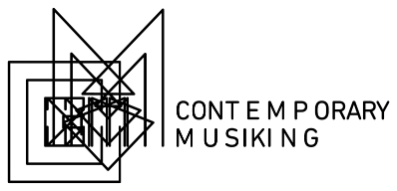


Venue / McAulay Studio, Hong Kong Arts Centre
Date / 2012.05.08
Featured Artists
Tse Chun-Sing (Hong Kong), Yinyi (Shanghai)
Yin Yi — composer, sound artist, phonographer, and professor of sound design; one of the most influential figures in the Shanghai sound art circuit and the founding artistic director of the city’s BM Space. Yin Yi will bring to Hong Kong for the first time his signature lush and sublime soundscape that defies categorisation. Hong Kong sound artist Tse Chun-sing will mount a network of hyper-multi-channel speakers that spreads into the audience, which invites audience intervention and participation. An evening of truly daring sound experiments!
Aura
By Samson Young
Yinyi swung his laptop open in a pitch-dark McAulay studio. The LCD screen tinted his face with an almost solemn paleness. An American sound artist once said to me that the computer screen is the best possible lighting for a laptop performance: it gives the artist an aura that extends deep into the performance space.Laptop performances are strange occurrences indeed. In the normative paradigm of live music, the physicality of the human body interfacing with an instrument is an integral part of a complete audio-visual experience. Laptop performances on the other hand are relentlessly sonic: a performer sits absolutely still, leaving the audience to mentally trace the route of causation from the digital source of sound (laptop) to the physical source of sound (speakers). There is nothing to see. What is left is a communal ritual, a shared experience of intense perceptual focus – not so different from, say, the sharing of a meal?This sort of listening experience is particularly conducive to repetitions, drones, and ostinati. Gestures that mess with our sense of time are particularly suited to this mode of sounding. In fact, so easy are trance-inducing textures that they have become almost a cliché in laptop performances. Not so with Yinyi’s: from the moment the first sound was heard my desires to ignore the here and the now were consistently and forcefully defied. One block of sound followed another with no apparent linear narrative logic; textures built to a sonic swell, only to be violently dropped the moment my ears became complacent. Yinyi’s sound took sharp turns, and made ungraceful transitions. The ride was definitely bumpy. Yet it managed to keep me firmly grounded in the here and the now, so that I was able to follow each grain of sound as they probed the limits of my aural perception. Yinyi’s presence demanded my full attention; but the experience was sublimely beautiful and nothing short of breathtaking.
C.P.E. Bach, son of the esteemed composer J.S. Bach, wrote music that took sharp and unusual turns. While J.S. Bach perfected a highly refined, highly codified language, it was C.P.E. Bach’s structural awkwardness that foreshadowed the dawn of a new era. That said, I suspect most would still much rather hear J.S. Bach in the mall?
Venue / McAulay Studio, Hong Kong Arts Centre
Date / 2012.05.08
Featured Artists
Tse Chun-Sing (Hong Kong), Yinyi (Shanghai)
Yin Yi — composer, sound artist, phonographer, and professor of sound design; one of the most influential figures in the Shanghai sound art circuit and the founding artistic director of the city’s BM Space. Yin Yi will bring to Hong Kong for the first time his signature lush and sublime soundscape that defies categorisation. Hong Kong sound artist Tse Chun-sing will mount a network of hyper-multi-channel speakers that spreads into the audience, which invites audience intervention and participation. An evening of truly daring sound experiments!
Aura
By Samson Young
Yinyi swung his laptop open in a pitch-dark McAulay studio. The LCD screen tinted his face with an almost solemn paleness. An American sound artist once said to me that the computer screen is the best possible lighting for a laptop performance: it gives the artist an aura that extends deep into the performance space.Laptop performances are strange occurrences indeed. In the normative paradigm of live music, the physicality of the human body interfacing with an instrument is an integral part of a complete audio-visual experience. Laptop performances on the other hand are relentlessly sonic: a performer sits absolutely still, leaving the audience to mentally trace the route of causation from the digital source of sound (laptop) to the physical source of sound (speakers). There is nothing to see. What is left is a communal ritual, a shared experience of intense perceptual focus – not so different from, say, the sharing of a meal?This sort of listening experience is particularly conducive to repetitions, drones, and ostinati. Gestures that mess with our sense of time are particularly suited to this mode of sounding. In fact, so easy are trance-inducing textures that they have become almost a cliché in laptop performances. Not so with Yinyi’s: from the moment the first sound was heard my desires to ignore the here and the now were consistently and forcefully defied. One block of sound followed another with no apparent linear narrative logic; textures built to a sonic swell, only to be violently dropped the moment my ears became complacent. Yinyi’s sound took sharp turns, and made ungraceful transitions. The ride was definitely bumpy. Yet it managed to keep me firmly grounded in the here and the now, so that I was able to follow each grain of sound as they probed the limits of my aural perception. Yinyi’s presence demanded my full attention; but the experience was sublimely beautiful and nothing short of breathtaking.
C.P.E. Bach, son of the esteemed composer J.S. Bach, wrote music that took sharp and unusual turns. While J.S. Bach perfected a highly refined, highly codified language, it was C.P.E. Bach’s structural awkwardness that foreshadowed the dawn of a new era. That said, I suspect most would still much rather hear J.S. Bach in the mall?